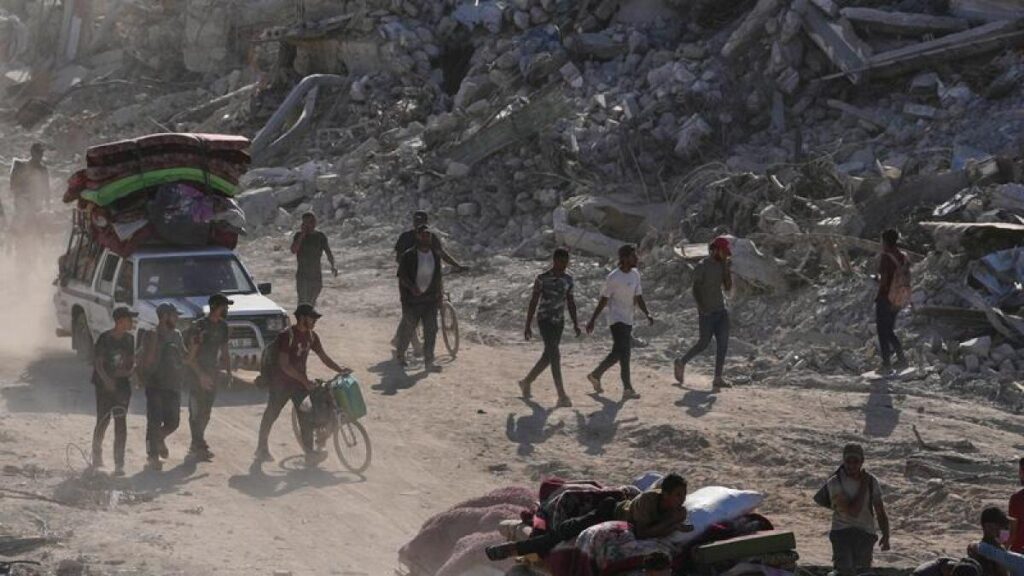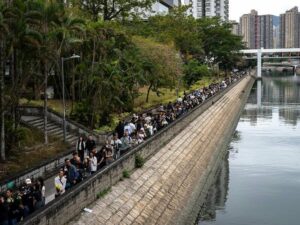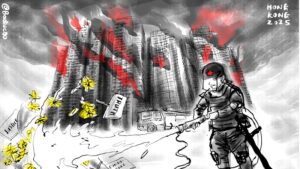
The ongoing humanitarian crisis in Gaza has taken a new turn as aid begins to flow into the region, coinciding with a complex dispute over the return of hostage bodies. On Wednesday, Israeli authorities announced preparations to open the Rafah crossing for Gazan citizens, amidst reports that 600 aid trucks would enter Gaza to alleviate the dire humanitarian situation.
In recent days, the militant group Hamas returned four bodies confirmed as deceased hostages on Monday and another four late Tuesday. However, Israeli authorities stated that one of those bodies did not belong to a hostage. The ongoing dispute over the return of bodies poses a significant challenge to the fragile ceasefire agreement and other unresolved issues.
Ceasefire and Humanitarian Aid Efforts
The truce requires Hamas to disarm and relinquish power, a demand it has yet to comply with. Instead, Hamas has intensified a security crackdown in Gaza, showcasing its authority through public executions and clashes with local clans. The longer-term aspects of the ceasefire, including governance in Gaza, the composition of an international force, and the establishment of a Palestinian state, remain unclear.
Currently, twenty-one bodies of hostages are still believed to be in Gaza, with recovery efforts complicated by the extensive destruction caused by the conflict. An international task force has been established to locate these bodies. Additionally, the agreement mandates that Israel return the remains of 360 Palestinian militants killed during the conflict, with the first group of 45 bodies handed over on Tuesday, pending identification by Palestinian health authorities.
The humanitarian crisis in Gaza escalates daily, with nearly all inhabitants displaced from their homes. A global hunger monitor has indicated that famine conditions are present in the enclave, and local health authorities report being overwhelmed by the demands of the crisis.
On Wednesday, video footage from Reuters revealed aid trucks moving from the Egyptian side of the border into the Rafah crossing at dawn, carrying fuel and essential supplies. However, it remains uncertain whether this convoy will complete its journey into Gaza as part of the planned 600 trucks expected to enter under the ceasefire terms.
Security Crackdown and Regional Tensions
Aid continues to flow through the Kerem Shalom Crossing and other routes following Israeli security inspections. Meanwhile, Rafah is set to be opened to Palestinian residents for both entry and exit. Yet, individuals awaiting medical evacuation expressed concern about not receiving notifications from the World Health Organization regarding travel preparations.
Several Palestinian factions in Gaza have supported Hamas’s recent security measures, targeting local clans that attempted to assert control during the conflict. The Popular Front for the Liberation of Palestine has described these clans as “hubs of crime.”
U.S. President Donald Trump, who facilitated the ceasefire agreement, has endorsed Hamas’s crackdown on rival factions, cautioning that airstrikes will follow if the group fails to disarm in the future.
The public execution of seven men by masked gunmen in Gaza has drawn condemnation from Palestinian Authority Chairman Mahmoud Abbas, who labeled the killings a crime and a “blatant violation of human rights.”
As the situation evolves, Israeli forces have withdrawn to what the truce categorizes as a yellow line outside major cities. Israeli Defence Minister Israel Katz emphasized the government’s readiness to respond to any violations of this boundary.
The multifaceted dynamics of the ceasefire, humanitarian efforts, and regional governance continue to unfold, illustrating the complexities inherent in resolving the ongoing crisis in Gaza.






